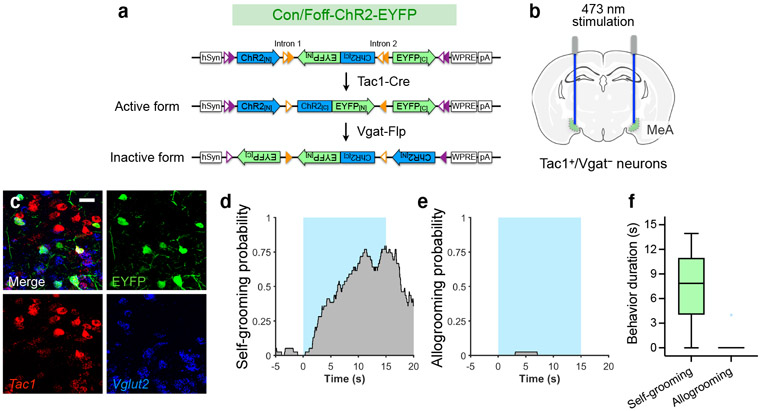Extended Data Fig. 7. Activation of MeA Tac1+/Vgat− neurons promotes self-grooming but not allogrooming.
a, b, Schematic of an intersectional approach for expression of ChR2 in Tac1+/Vgat− neurons in the MeA using a Cre-on and Flp-off AAV virus. c, Example images showing that the majority of EYFP+ cells are glutamatergic (Vglut2+, 64.0 ± 1.8%, mean ± s.e.m.) and Tac1+ (91.8 ± 0.5%, mean ± s.e.m.) in Tac1Cre/+/VgatFlp/+ animals injected with the Con/Foff-EYFP virus (n = 3 hemispheres independently injected with the virus from 2 mice (5-7 sections per hemisphere). Scale bar, 25 μm. d, e, Probability of self-grooming (d) and allogrooming (e) toward stressed partners (fraction of trials showing a particular behavior at different time points) with respect to stimulation onset in ChR2 animals. Blue areas: duration of light illumination; time 0: stimulation onset. f, Duration of self-grooming and allogrooming toward stressed partners during photostimulations. Boxplots: median with quartiles, 1.5 × IQR and outliers. d–f, n = 39 trials in 4 mice (18 trials in 2 females and 21 trials in 2 males) for both self-grooming and allogrooming. The Cre-on/Flp-off virus used in the current study has been reported to lead to residual expression in a minor fraction of Cre+/Flp+ cells, possibly due to insufficiency of Flp relative to Cre (refs. 30, 52). Nonetheless, we found that when using this virus, the majority of EYFP+ cells (64.0 ± 1.8%, mean ± s.e.m.) were Vglut2+. Of note, the observation that the Cre-on/Flp-off animals did not show induction of allogrooming behavior suggests that activation of the small fraction of Tac1+/Vgat+ neurons in these animals (concurrent with activation of Tac1+/Vgat− neurons) was not sufficient to drive allogrooming behavior. On the other hand, the observation that activation of Tac1+/Vgat+ neurons in animals injected with the Cre-on/Flp-on virus did not trigger self-grooming behavior suggests that the residual Tac1+/Vgat+ neurons labeled with the Cre-on/Flp-off virus are not responsible for the induction of self-grooming.

